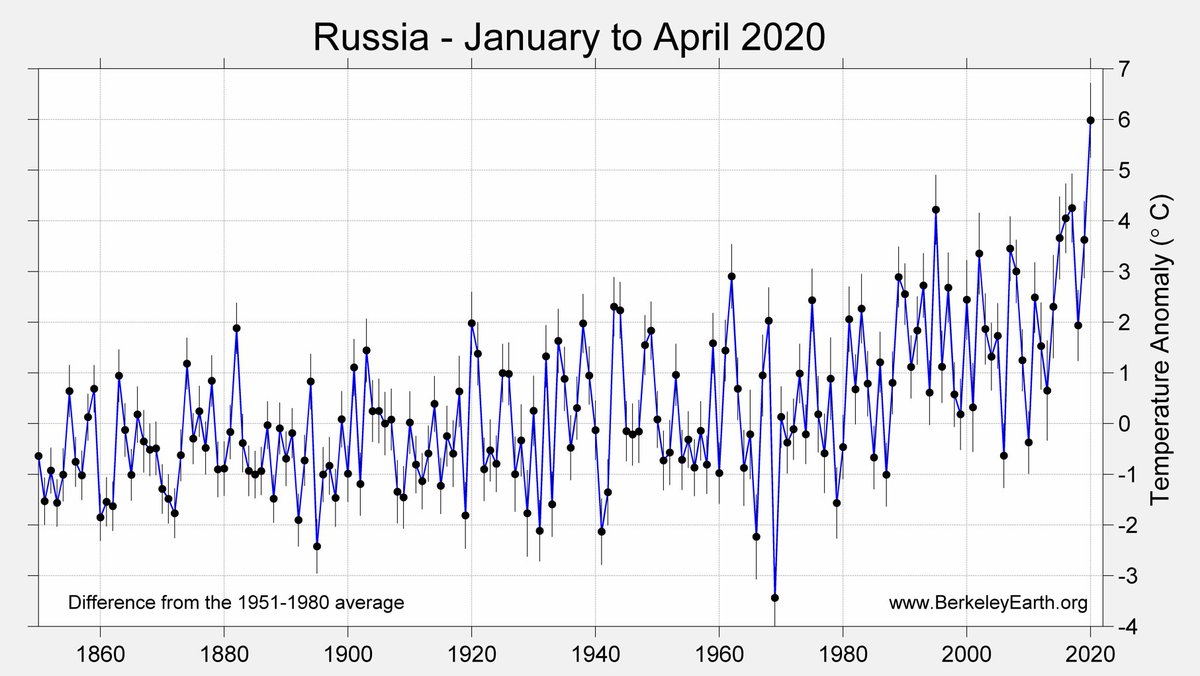
THREAD) The climate scientists consensus guide for who to follow on Twitter.
Need more climate information in your twitter feed?
Many suggestions are available in this thread
#FollowFriday #FF
Need more climate information in your twitter feed?
Many suggestions are available in this thread
#FollowFriday #FF
There are literally thousands of scientists working on climate related issues who have joined Twitter.
@KHayhoe has created an excellent list of 3,148 such scientists, and if you want to get them all, you can follow her list directly.
twitter.com/i/lists/105306…
2/
@KHayhoe has created an excellent list of 3,148 such scientists, and if you want to get them all, you can follow her list directly.
twitter.com/i/lists/105306…
2/
The most popular, i.e. most followed, scientists working on climate issues are:
@KHayhoe
@MichaelEMann
@picazomario (mostly in Spanish)
@JacquelynGill
@PeterGleick
@hood_naturalist
@ClimateHuman
@KavehMadani (often in Farsi)
@ayanaeliza
@rahmstorf (often in German)
3/
@KHayhoe
@MichaelEMann
@picazomario (mostly in Spanish)
@JacquelynGill
@PeterGleick
@hood_naturalist
@ClimateHuman
@KavehMadani (often in Farsi)
@ayanaeliza
@rahmstorf (often in German)
3/
But let's go further, because this is the "consensus" guide for who to follow on Twitter.
I analyzed the top 500 most-followed scientists working on climate issues from KHayhoe's list, and collated who they are following to create recommendations based on their "consensus".
4/
I analyzed the top 500 most-followed scientists working on climate issues from KHayhoe's list, and collated who they are following to create recommendations based on their "consensus".
4/
Unsurprisingly, scientists working on climate follow a lot of other scientists, so let's start there.
Below is a list of scientists that are the most followed by their fellow scientists working on climate (% of top 500 that are following is shown in parentheses).
5/
Below is a list of scientists that are the most followed by their fellow scientists working on climate (% of top 500 that are following is shown in parentheses).
5/
Consensus suggested scientists to follow (1/3):
@KHayhoe (87%), @ClimateOfGavin (65), @MichaelEMann (62), @DrKateMarvel (60), @coralsncaves (59), @JacquelynGill (59), @ed_hawkins (59), @PeterGleick (58), @GlobalEcoGuy (56), @KenCaldeira (55), @ClimateHuman (53)
6/
@KHayhoe (87%), @ClimateOfGavin (65), @MichaelEMann (62), @DrKateMarvel (60), @coralsncaves (59), @JacquelynGill (59), @ed_hawkins (59), @PeterGleick (58), @GlobalEcoGuy (56), @KenCaldeira (55), @ClimateHuman (53)
6/
Consensus suggested scientists to follow (2/3):
@NaomiOreskes (52), @hausfath (51), @rahmstorf (49), @richardabetts (49), @leahstokes (49), @flimsin (46), @DrShepherd2013 (45), @ayanaeliza (44), @Tessa_M_Hill (41), @HeidiCullen (41), @Weather_West (41), @Peters_Glen (41)
7/
@NaomiOreskes (52), @hausfath (51), @rahmstorf (49), @richardabetts (49), @leahstokes (49), @flimsin (46), @DrShepherd2013 (45), @ayanaeliza (44), @Tessa_M_Hill (41), @HeidiCullen (41), @Weather_West (41), @Peters_Glen (41)
7/
Consensus suggested scientists to follow (3/3):
@SarahEMyhre (41), @RARohde (40), @KevinClimate (40), @AndrewDessler (40), @GreatLakesPeck (40), @ZLabe (39), @maxboykoff (37), @dougmcneall (37), @DustyBowl (37), @valmasdel (36), @simondonner (36), @theresphysics (36)
8/
@SarahEMyhre (41), @RARohde (40), @KevinClimate (40), @AndrewDessler (40), @GreatLakesPeck (40), @ZLabe (39), @maxboykoff (37), @dougmcneall (37), @DustyBowl (37), @valmasdel (36), @simondonner (36), @theresphysics (36)
8/
But scientists working on climate don't just follow other scientists. Here are some suggested organizations (1/2):
@IPCC_CH (61), @NatureClimate (54), @ClimateCentral (53), @CarbonBrief (50), @UNFCCC (49), @YaleClimateComm (46), @NatureNews (44), @theAGU (44)
9/
@IPCC_CH (61), @NatureClimate (54), @ClimateCentral (53), @CarbonBrief (50), @UNFCCC (49), @YaleClimateComm (46), @NatureNews (44), @theAGU (44)
9/
Consensus suggested organizations (2/2):
@NASAClimate (43), @guardianeco (43), @ScienceMagazine (42), @ClimateReality (41), @NOAA (40), @nytclimate (40), @nature (40), @skepticscience (40), @NASA (39), @UNEP (38), @AcademicsSay (38), @ClimateFdbk (36), @sciam (36)
10/
@NASAClimate (43), @guardianeco (43), @ScienceMagazine (42), @ClimateReality (41), @NOAA (40), @nytclimate (40), @nature (40), @skepticscience (40), @NASA (39), @UNEP (38), @AcademicsSay (38), @ClimateFdbk (36), @sciam (36)
10/
Maybe you want to hear from journalists? Some journalists followed by many scientists in climate:
@EricHolthaus (62), @revkin (53), @chriscmooney (40), @dana1981 (40), @MWClimateSci (39), @LeoHickman (39), @blkahn (38), @afreedma (37), @edyong209 (36), @emorwee (35)
11/
@EricHolthaus (62), @revkin (53), @chriscmooney (40), @dana1981 (40), @MWClimateSci (39), @LeoHickman (39), @blkahn (38), @afreedma (37), @edyong209 (36), @emorwee (35)
11/
Additional communicators and activists working on climate that many scientists in climate have chosen to follow:
@GretaThunberg (65), @tveitdal (48), @billmckibben (48), @Alex_Verbeek (42), @DoctorVive (41), @MaryHeglar (40), @ClimateComms (37)
12/
@GretaThunberg (65), @tveitdal (48), @billmckibben (48), @Alex_Verbeek (42), @DoctorVive (41), @MaryHeglar (40), @ClimateComms (37)
12/
Lastly, there are a few politicians that many scientists in climate are following:
@BarackObama (53), @AOC (45), @CFigueres (41), @JoeBiden (39), @KamalaHarris (38), @algore (36)
13/
@BarackObama (53), @AOC (45), @CFigueres (41), @JoeBiden (39), @KamalaHarris (38), @algore (36)
13/
Thus completes this "consensus" list of Twitter accounts, including all accounts followed by at least 180 of the 500 most-followed scientists in climate.
Don't see some of your Twitter favorites? Feel free to add them in the replies.
14/14
Don't see some of your Twitter favorites? Feel free to add them in the replies.
14/14
• • •
Missing some Tweet in this thread? You can try to
force a refresh










